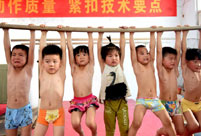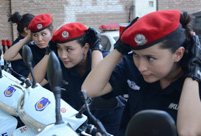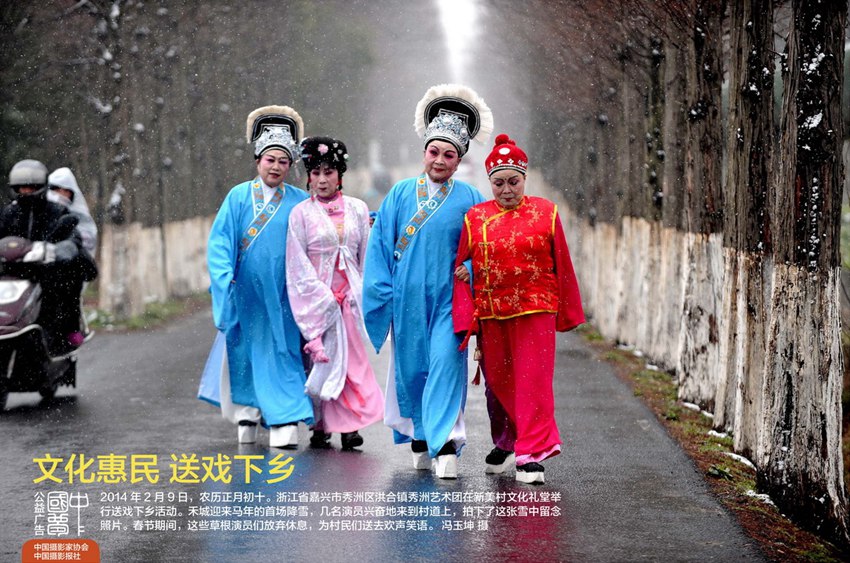 The 4th Chinese National Pole Dance Championship held in Tianjin
The 4th Chinese National Pole Dance Championship held in Tianjin
 Chinese navy commandos debut at 2014 RIMPAC
Chinese navy commandos debut at 2014 RIMPAC
 Guangxi impression: scenic countryside
Guangxi impression: scenic countryside
 World's largest aquatic insect found in Sichuan
World's largest aquatic insect found in Sichuan
 Ceremony volunteers for Youth Olympics make public appearance
Ceremony volunteers for Youth Olympics make public appearance
 A glimpse of female crew of Liaoning aircraft carrier
A glimpse of female crew of Liaoning aircraft carrier
 Stills from "Dad, where are we going?"
Stills from "Dad, where are we going?"
 Legless man's happy life
Legless man's happy life
 Top ten most beautiful islands in China
Top ten most beautiful islands in China
 Aerial view of Hong Kong
Aerial view of Hong Kong
BEIJING, July 23 -- China's lunar probe, Chang'e-5, will be launched around 2017 and its mission to collect samples from the moon and return to earth is the most challenging yet, according to Wu Weiren, chief designer of China's lunar exploration program.
The last phase of the three-phase lunar exploration program - after orbiting and soft-landing - requires a larger and more complex system, Wu said at an exhibition on China's lunar exploration program in Hong Kong.
Phase three will use a new launch site, rocket, and lunar probe.
The team faces four major technical challenges: moon surface sampling; taking off from moon; lunar orbit rendezvous; and high-speed re-entry into the Earth's atmosphere.
In sampling, the drill could hit rocks, and technicians must make ensure the soil layer structure was unharmed.
Taking-off from the moon would require repeated adjustment of latitude and stability.
Lunar orbit rendezvous had to be very precise as the rendezvous would take place nearly 400,000 km from earth.
High-speed re-entry of Chang'e-5 over the designated landing spot was also difficult as other countries had lost communication with their explorers in this stage.
"Technicians have overcome many technical challenges and reached the latter stage of development involving experimentation and manufacture of the equipment," said Wu.
The Chang'e-3 lunar probe with its moon rover, Yutu, or Jade Rabbit, was launched in late 2013, but its control mechanism failed on its second lunar day before it fell dormant.
Wu said Yutu has been re-awakened, but its problems continued.
Yutu has passed its eighth lunar day with a short-circuit in its moving mechanism and partial degeneration of its equipment, but it has completed its mission, Wu said.
Yutu has been more resilient than expected, said Zhang Yuhua, deputy chief designer of the Chang'e-3 lunar probe. The condition of its landing site was far worse than expected with the amount and size of rocks greater than reported in foreign statistics.
Experts said Yutu might have been damaged by a rock on its second lunar day.
Repairing Yutu was very difficult when it was 380,000 km from earth and its voltage has dropped after months of repetitive contraction and expansion due to the 300-degree centigrade temperature difference between day and night on the moon.
It is still unsure if China is going to make a Yutu-2. If so, designers would have to focus on raising its moving speed, effectiveness and adaptability, said Jia Yang, another deputy chief designer of the Chang'e-3 lunar probe.
Japan is reportedly developing an unmanned lunar probe for launch in 2019, in what is considered a challenge to China.
But China is already ahead, said Wu.
Compared to the "space race" between the United States and former Soviet Union, China's lunar exploration is more rational, Wu said.
"China will not compete with other countries," said Wu. "Our lunar exploration is based on scientific research."
He said China's lunar probe technology, such as observation and control, computer simulation, and software would generate great economic value if adapted for commercial use.
Cooperation with Hong Kong scientists would continue in phase three of the Chang'e program with development of a lunar sampling device.
The exhibition on China's lunar exploration program opened in Hong Kong on July 21 at the Hong Kong Science Museum, the first such exhibition in a decade of China's lunar exploration program.
 Zhujiang ambassadors attend lotus lanterns activity
Zhujiang ambassadors attend lotus lanterns activity
 From girly girl to tough special police officer
From girly girl to tough special police officer
 Children attend gymnastics training in summer
Children attend gymnastics training in summer
 Beautiful sceneries along the special travel route in Xinjiang
Beautiful sceneries along the special travel route in Xinjiang
 Focus on 1st female patrol team in Turpan
Focus on 1st female patrol team in Turpan
 Collection of 'China Dream' public-spirited ads
Collection of 'China Dream' public-spirited ads  National fitness team members integrate traditional and modern beauty
National fitness team members integrate traditional and modern beauty Moms on their kid’s coming out
Moms on their kid’s coming out Chinese fighters through lens
Chinese fighters through lens
 48 hours after super Typhoon Rammasun
48 hours after super Typhoon Rammasun Bikini show held at water park in Xi'an
Bikini show held at water park in Xi'an
 Lobster vs cat: catch me if you can
Lobster vs cat: catch me if you can  Heat waves sweep China
Heat waves sweep China  Top 10 most beautiful islands in China
Top 10 most beautiful islands in China
 Zhou Xun announces engagement to Archie Gao
Zhou Xun announces engagement to Archie Gao
Day|Week|Month